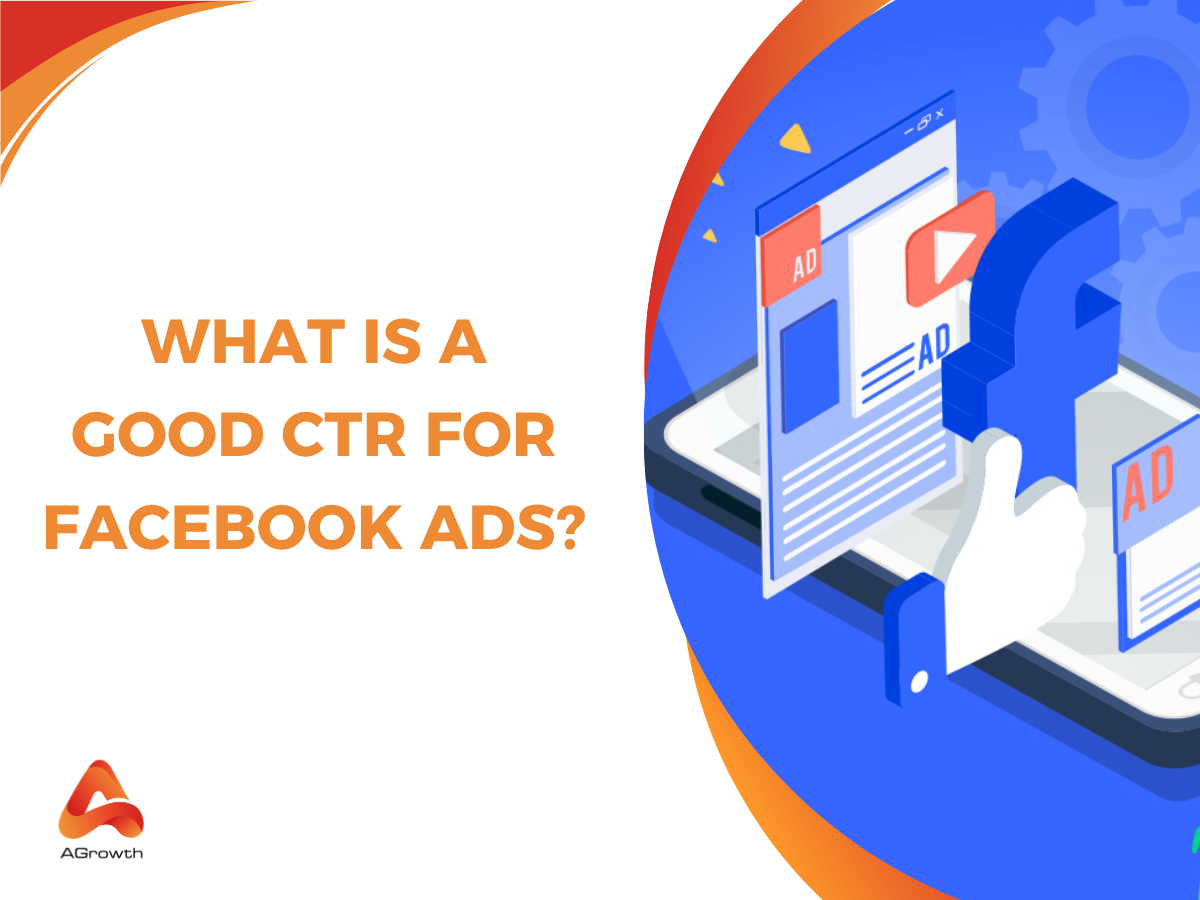
Table of Contents
What Is a Good CTR for Facebook Ads? Benchmarks, Averages, and How to Improve
We all want our Facebook ads to grab attention and drive action but figuring out what counts as a “good” click-through rate (CTR) can feel like chasing a moving target. With so many industries and ad types out there the definition of a strong CTR isn’t always clear-cut. Still understanding this metric is key since it shows how effective our ads are at turning views into clicks.
CTR measures the percentage of people who click on an ad after seeing it—a simple number with big implications for our campaigns. While a high CTR doesn’t guarantee success it’s a strong sign that our message is resonating with the right audience. Let’s break down what makes a CTR “good” on Facebook and set realistic benchmarks so we can measure our ads’ true impact.
What is CTR on Facebook?
Click-through rate (CTR) on Facebook represents the percentage of users who click on an ad after viewing it. This metric offers a direct measure of how successfully our ads capture attention and prompt action.
Why does Facebook ads CTR matter?
Facebook ads CTR matters because it indicates how well our ads engage the audience and drive initial interaction. High CTRs signal relevant targeting, compelling creative, and engaging copy in Facebook ads—examples include campaigns for retail, fitness, or technology that outperform industry averages. Low CTRs often reveal gaps in audience alignment or ad appeal. Monitoring this metric helps us identify which ads spark interest and which require improvement, enabling efficient budget allocation and campaign optimization.
How do you calculate it on Facebook?
We calculate Facebook ads CTR by dividing the number of ad clicks by the number of ad impressions, then multiplying by 100 to express the result as a percentage. For example, if an ad receives 50 clicks and 5,000 impressions, CTR equals (50 / 5,000) x 100 = 1%. The formula ensures consistent comparison across campaigns and industries, whether we measure beauty, finance, or education ad performance.
What is the average CTR for Facebook ads?
Average CTR for Facebook ads across all industries stands at 0.90%. Studies from multiple datasets confirm this number, with a few reporting median values as high as 1.80%. Data sources including WordStream and Meta’s ad benchmark reports place this average consistently near 0.90%.
Industry breakdowns reveal differences in Facebook ad CTR. Ecommerce ads generally perform above average, often at 1.15%. Food and Drink ads record the lowest at 0.88%. Interactive ad types reach CTRs of 1.25% to 1.33%. Video ads typically start at 0.50%. Retail and ecommerce sectors outperform categories like Food and Drink, Finance, or B2B.
|
Industry/Ad Type |
Avg CTR (%) |
|
All industries |
0.90 |
|
Median (all) |
1.80 |
|
Ecommerce |
1.15 |
|
Food and Drink |
0.88 |
|
Interactive Ads |
1.25 – 1.33 |
|
Video Ads |
0.50+ |
Good CTR ranges span 0.5% to 5%, depending on ad type, audience, and industry. For example, audience targeting, creative quality, and relevance play critical roles when determining the average CTR for Facebook ads in practical scenarios. Consistent monitoring against these benchmarks helps identify effective campaigns and areas for improvement.
What is a good CTR for Facebook ads?
A good CTR for Facebook ads aligns with platform-wide benchmarks and industry standards. Across all sectors, the average CTR falls between 0.90% and 1.10%. Our data shows that industries like ecommerce and retail often surpass this average, reaching up to 1.15%, while sectors such as Food and Drink report CTRs closer to 0.88%.
We see that interactive ad formats consistently deliver higher performance. Interactive ads reach CTRs of 1.25% to 1.33%. Video ads generally secure lower engagement, starting from 0.50%. For most campaigns, a "good" CTR clusters within a wide span—from 0.5% for niche or highly targeted campaigns, up to 5% for broadly appealing content or exceptionally optimized strategies.
The table below summarizes recent CTR benchmarks by ad type and industry:
|
Ad Type / Industry |
Average CTR (%) |
|
All Industries |
0.90 – 1.10 |
|
Ecommerce/Retail |
1.15 |
|
Food & Drink |
0.88 |
|
Interactive Ads |
1.25 – 1.33 |
|
Video Ads |
0.50+ |
|
General Good CTR Range |
0.5 – 5.0 |
We recommend consistently evaluating our results against these metrics. For campaigns with CTRs above their respective averages, engagement likely indicates strong alignment of creative and audience targeting. Lower-than-benchmark CTRs suggest a need to reassess creative elements, offer relevance, or refining audience segments. Recognizing these targets allows us to set realistic expectations and incrementally optimize campaign performance.

Tracking Your Facebook Ads CTR
Tracking Facebook ads CTR involves monitoring the percentage of users who click our ad after viewing it. We use Facebook Ads Manager to access this data, ensuring accurate measurement of campaign performance.
Steps to Find CTR in Facebook Ads Manager
-
Access Facebook Ads Manager from the left sidebar on our homepage
-
Click the Ads tab within Ads Manager
-
Select the desired time frame for viewing ad performance
-
Under the Columns tab, choose Performance and Clicks
-
By default, Facebook displays unique clicks for each ad
-
To view CTR, select Performance and Clicks in the Columns dropdown
-
For further customization, click the blue plus sign to select Customize columns
-
Find CTR under the Performance section and check the box
-
Scroll horizontally to find the CTR (All) column
Following these steps displays CTR for each ad and campaign, offering metrics to evaluate effectiveness.
Why Monitoring CTR Matters
Monitoring CTR for Facebook ads provides insight into ad resonance with our target audience. If our CTR meets or exceeds industry averages—such as 0.90% across all industries or higher for ecommerce—our ads align with audience interests. If CTR falls below benchmarks, this signals a need to test new creatives or targeting strategies.
Measuring and Comparing
Facebook Ads Manager allows us to track CTR over time and compare results:
|
Metric |
Value Range |
Context Example |
|
Average CTR (All) |
0.90% |
All industries |
|
Median CTR (2025) |
1.80% |
Benchmark data |
|
Interactive Ad CTR |
1.25% – 1.33% |
Polls, carousel ads |
|
Video Ad CTR |
≥0.50% |
In-feed video ads |
|
Ecommerce Ad CTR |
>1.15% |
Retail, shopping ads |
|
Good CTR Range |
0.5% – 5% |
All sectors |
We review CTR regularly, aligning our analysis with platform-wide standards and specific vertical benchmarks. This process identifies underperforming ads and highlights opportunities for optimization, keeping our campaigns data-driven and goal-focused.
Evaluating your Facebook ads CTR
Evaluating our Facebook ads CTR ensures we measure campaign engagement accurately and set performance benchmarks. Understanding how to attribute CTR and differentiate it from conversion metrics strengthens our optimization strategy.
CTR attribution
CTR attribution allows us to identify the precise impact of every impression on click volume. We calculate CTR using the formula: (Clicks / Impressions) x 100. For example, if our ad generates 50 clicks from 2,000 impressions, the CTR equals 2.5%. Transparent attribution prevents data skew, so we always filter for unique clicks and ensure counts reflect our actual ad creatives, not externally-linked posts. Aligning reported CTR with actual ad objectives helps us detect performance trends over time.
CTR vs. conversions
CTR vs. conversions clarifies the distinction between ad engagement and outcome. While CTR measures audience interaction—such as clicking an ad—conversion rate (CVR) tracks users completing a desired action after clicking, like purchases or sign-ups. Industries like fitness, education, and healthcare often see conversion rates exceeding 10%, which surpasses their CTR benchmarks. Retail and technology commonly report lower conversion rates even though average CTRs. Effective Facebook ad evaluation requires us to compare both CTR and CVR against industry standards, focusing on ads that not only attract clicks but also drive business goals.
Combining placements across Facebook, Instagram, and the Facebook ads audience network often improves CTR by reaching users across more digital environments.
6 Ways to Increase CTR for Facebook Ads
Boosting CTR for Facebook ads requires targeted strategies that address both relevance and engagement. Using data-driven optimization, we can refine each campaign element for greater impact and sustained ad performance.
1. Narrow Your Targeting
Focusing Facebook Ads Target drives higher CTR by showing ads only to relevant users. We segment audiences using demographics, interests, and behaviors to ensure ads reach those with the strongest intent. Tight targeting improves ad relevance and connection with high-quality leads.
2. Run Retargeting Campaigns
Executing retargeting increases ad CTR by reconnecting with users who already interacted with our brand or content. Retargeting campaigns leverage familiarity, making users more likely to click because they recognize and trust the brand.
3. Use Engaging Visuals
Adding engaging visuals—such as dynamic images, branded graphics, or short-form video—raises CTR by drawing attention in crowded news feeds. To ensure your visuals display properly across all placements, it’s important to follow the recommended best practices for Facebook ad sizes and formats.
Visuals that align with ad messaging and appeal to audience preferences consistently outperform generic creative assets.
4. Improve Your Ad Copy
Crafting clear, concise, and action-oriented ad copy motivates users to engage and click. We test direct language, compelling value propositions, and strong calls-to-action. Shorter copy, especially in Facebook ads, streamlines reader decisions and lifts CTR.
6. Split Test Everything
Running A/B tests on all ad elements uncovers what drives the highest CTR. We experiment continuously—adjusting targeting, copy, visuals, and formats—to determine top performers. Split testing at every stage generates incremental improvements, helping us stay above industry benchmarks.

Benchmark Click Through Rate for Facebook Ads
Average CTR benchmarks for Facebook ads vary across industries and ad formats. For most sectors, the average CTR sits between 0.90% and 1.10%. The median CTR hovers near 1.80%, based on aggregated industry studies from recent years. Ad types and campaign objectives can shift these numbers, with interactive and ecommerce campaigns often moving toward the higher end of the spectrum.
Facebook Ads CTR by Industry
|
Industry |
Average CTR (%) |
|
Ecommerce |
1.15 |
|
Food & Drink |
0.88 |
|
Retail |
1.10 |
|
Fitness |
1.11 |
|
Finance |
0.56 |
|
Technology |
1.04 |
|
Median (Overall) |
1.80 |
Facebook Ads CTR by Ad Type
Different formats contribute to variations in average CTR. Interactive ads record rates between 1.25% and 1.33%. Video ads generally start at 0.50%, although top-performing video campaigns can surpass this baseline. Retail and ecommerce brands often leverage these ad types to achieve above-average engagement.
Broad CTR Range
The typical benchmark range for social advertising on Facebook spans 0.5%–5%, depending on factors like audience targeting, creative quality, and industry. Most standard campaigns perform between 0.90% and 1.80%. Numbers significantly above these averages, such as rates above 2.0%, indicate high-performing campaigns for many verticals.
Comparing Benchmarks with Other Platforms
CTR standards on Facebook differ from those on more interactive platforms. For example, YouTube routinely sees CTRs near 20%. We compare Facebook ad performance only to platform-specific benchmarks, since audience expectations and engagement models differ across networks.
Practical Implications
When our Facebook campaign CTR meets or exceeds industry medians, it signals effective audience alignment and ad relevance. If rates fall short of the 0.90%–1.10% average, reviewing creative assets and segmenting the audience further supports optimization efforts. These benchmarks guide ongoing assessment of campaign performance across all industries and ad formats.
Unlocking Insights: Enhancing Facebook Ads CTR with the Facebook Ads Library
When we're aiming to improve our Facebook ads CTR, the Facebook Ads Library is a powerful resource. By exploring top-performing ads in our industry, we can spot creative trends and messaging strategies that resonate with similar audiences.
Leveraging these insights helps us refine our own campaigns and stay ahead of the competition. Consistently analyzing what works for others lets us adapt quickly and optimize our ads for better engagement and higher CTR.
Let's make it a habit to review the Facebook Ads Library regularly and use data-driven inspiration to keep our campaigns fresh, relevant, and effective.
Frequently Asked Questions
What is CTR in Facebook ads?
CTR (Click-Through Rate) in Facebook ads measures the percentage of users who click on your ad after seeing it. It’s calculated by dividing the number of clicks by the number of ad impressions, then multiplying by 100. CTR helps determine how engaging and effective your ad is with your intended audience.
What’s considered a good CTR for Facebook ads?
A good CTR for Facebook ads typically ranges from 0.90% to 1.10%, with industry medians reaching up to 1.80%. However, what’s “good” can vary by industry and ad type. Interactive ads often perform higher, while video ads may have lower CTRs.
How does CTR impact Facebook ad performance?
A higher CTR indicates your ad is relevant and engaging to your target audience, reflecting effective targeting and creative. However, a good CTR doesn’t guarantee conversions or sales—it mainly measures initial user engagement, not overall campaign success.
How do I calculate CTR for Facebook ads?
To calculate CTR, divide the total number of clicks on your ad by the number of impressions (times the ad was shown), then multiply by 100. For example, if your ad has 100 clicks from 10,000 impressions, the CTR is (100/10,000) x 100 = 1%.
What are the average CTR benchmarks for Facebook ads by industry?
Average Facebook ad CTR varies:
-
Ecommerce: 1.15%
-
Food & Drink: 0.88%
-
Finance: 0.56%
-
Interactive ads: 1.25% to 1.33%
-
Video ads: around 0.50%
Comparing your results to these benchmarks helps gauge ad performance.
Why is monitoring CTR important?
Monitoring CTR helps you understand if your ads are resonating with your target audience. Consistent tracking allows you to identify high-performing campaigns, spot areas for improvement, and optimize your strategies for better engagement.
How can I improve CTR on my Facebook ads?
Boost CTR by refining your target audience, using retargeting campaigns, adding eye-catching visuals, crafting clear and motivating ad copy, and regularly A/B testing different ad elements to find what works best.
Where can I track and analyze my Facebook ads’ CTR?
You can track your Facebook ads’ CTR in Facebook Ads Manager from your Facebook ads account, allowing you to monitor and compare results easily
Navigate to the “Performance” column in your campaign dashboard to view and customize CTR metrics for each ad, helping you monitor and compare results easily.
Is a high CTR always a sign of a successful ad?
Not necessarily. While a high CTR indicates users are clicking your ad, it doesn’t mean they’re converting or completing your desired action. Always compare both CTR and conversion rates (CVR) to measure true campaign success.
How does Facebook ads CTR compare to other performance metrics?
CTR measures initial engagement—how many people click after seeing your ad. Conversion rate (CVR) goes further, showing how many complete a desired action post-click. Both should be monitored and compared to assess campaign performance.
These actions can range from purchases to lead form submissions, depending on campaign goals








Your comment